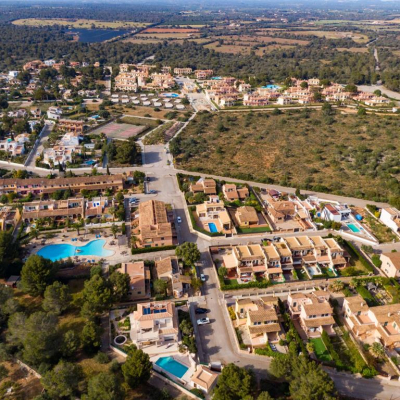Paying Taxes in Spain

General Information about Taxes in Spain
Like most other modern democracies, Spain sets a fixed tax on everything from clothing to taxi rides, called the IVA, or Impuesto sobre el Valor Añadido. You'll notice that this tax is included to just about every item you can purchase in the country and its autonomous cities, making the need for calculating tax before you get to the register unnecessary. This also applies to food products and restaurants.
In September 2012, a hike in IVA went into effect, making prices soar between 8 – 21%. Nearly every industry was affected. Medicine has stayed static at 4%, while transportation, food products and the entire hospitality industry has jumped to 10%. By far the biggest pill to swallow is the 21% tax applied to shows and theatre tickets, salons, services given by individuals (such as cleaning services or hospice nurse care) and even flower arrangements! Many businesses in Spain have lashed out, fighting to keep their prices low and absorbing the cost for their clients. If you're a tourist, you can have the IVA discounted from your purchases by presenting all receipts at an airport booth.
Tipping in Spain is not necessary. Those who work in the hospitality industry are already given a salary, so it's customary to just round up to the next euro at a restaurant or bar, and a euro or two for taxi driver and esthetician is normal.
Residents often pay the following taxes:
- Income (filed by June 30)
- Property (usually filed between September and November)
- Municipal (varies by region and taxes water and trash)
- Motor vehicle (usually around September)
and any luxury taxes, if applicable.
Paying Taxes in Your Own Country
Before paying taxes in Spain, check with your nearest consulate to see if it's necessary to pay taxes in your own country. Even if you reside permanently outside your home country and have no income there, it may be necessary to submit a tax form or risk severe consequences.
What is the Declaración de la Renta and the Borrador?
The most important tax to be paid to the government is the Declaración de la Renta, which encompasses both income and property taxes. The deadline for the previous year's tax form to be filed is 30 June.
Income tax
Residents of Spain must submit their tax information and all of their income, regardless of where it was earned, whereas non-residents must only declare what has been earned inside of Spain and its territories. On a normal paycheck, the typical tax rate is anywhere between 14 – 35%, depending on income bracket. This is called the IRPF, and forms 104 and 105 can be filed from 1 January until 30 June.
Note that residents who do not pass the 18,000€ income bracket are not required to pay any sort of income tax (unless they reach 11,200€ annually from two different payment sources), and non-residents who own property but are not employed are often exempt from income taxes, though a property tax must be paid.
Property tax
All dwellings owned in Spain must be accounted for, even if they are used merely for rentals (in which case, you'd declare the amount received in rent payments). If the property is owned by a married couple or several individuals, each must file his own paperwork. The tax rate is set at 25%.
The borrador, then, is the tax information that gets submitted to the Delegación de Hacienda, or the Treasury Department, in your region.
All models can be downloaded, printed and filled out by clicking here.
How to Submit Your Tax Form
Filing taxes can be done in one of three ways: in person at the nearest Treasury office, by phone or over the Internet.
Hacienda offices are all over Spain, usually in province capitals. There are multiple offices within large cities.
Madrid headquarters:
Calle de Alcalá
5 28701 MADRID
Once you've settled into Spain, you can get a series of free tax stickers, called etiquetas, from the Treasury office which will contain a bar code. This bar code has information about your residence and possible employment, and will make the process of filing out paperwork simpler.
During the six months that one can present their tax forms, you'll need the following documentation if you plan on presenting your declaration in person:
- The 20 – paged tax declaration form, D-100, filled out entirely
- A valid photo ID (a NIE is the most common form)
- Photocopies of any patrimony not explicitly declared in your tax form
To avoid problems and back-up in payment, it's important to make sure that every datum is filled out correctly in blue or black pen and in capital letters. Be sure to sign on each required page.
Easier yet is the online option, which is nearly instantaneous. Forms can be found on www.agenciatributaria.es. As Spain moves forward into the digital age, most of the information about your personal taxes and domicile are stored electronically, making the process as simple as a few mouse clicks. Using your foreign resident number to sign in. You'll be asked to confirm your full name, address in Spain and place of employment, if applicable. A text message confirmation will be sent to your mobile phone with a long code, which serves as the identity confirmation. A PDF will pop up with all of your financial and property information for the previous fiscal year (which runs 1 January to 31 December). After checking for errors, you can decide to donate part of your return to the Catholic Church or social programs, and the amount to be paid or returned follows on page 7.
An instructional video on paying your taxes in Spain (Spanish) provides helpful information.
Any payments necessary to the government can be paid at the Treasury or at a local bank branch. If you're getting a refund, it should arrive before the end of the year.
By Cat Gaa, who left her native Chicago five years ago to live in the olive groves of Andalusia. Residing in Seville, she teaches first grade at a private school, but all she wants to really do is write.
- My Life Abroad -
A selection of expat stories

"A fun compulsive read!"
J. Matcham, Amazon
"I strongly advise people ready to live abroad to read this book!"
Patrice, Amazon

 Why using an alternative broker for large money transfers
Why using an alternative broker for large money transfers Global events on real estate markets: are they connected?
Global events on real estate markets: are they connected? Fexco payment solutions
Fexco payment solutions Embassies and Consulates in Spain
Embassies and Consulates in Spain